I am trying to build an equity curve in Python using Pandas. For those not in the know, an equity curve is a cumulative tally of investing profits/losses day by day. The code below works but it is incredibly slow. I've tried to build an alternate using Pandas .iloc and such but nothing is working. I'm not sure if it is possible to do this outside of a loop given how I have to reference the prior row(s).
for today in range(len(f1)): #initiate a loop that runs the length of the "f1" dataframe
if today == 0: #if the index value is zero (aka first row in the dataframe) then...
f1.loc[today,'StartAUM'] = StartAUM #Set intial assets
f1.loc[today,'Shares'] = 0 #dummy placeholder for shares; no trading on day 1
f1.loc[today,'PnL'] = 0 #dummy placeholder for P&L; no trading day 1
f1.loc[today,'EndAUM'] = StartAUM #set ending AUM; should be beginning AUM since no trades
continue #and on to the second row in the dataframe
yesterday = today - 1 #used to reference the rows (see below)
f1.loc[today,'StartAUM'] = f1.loc[yesterday,'EndAUM'] #todays starting aseets are yesterday's ending assets
f1.loc[today,'Shares'] = f1.loc[yesterday,'EndAUM']//f1.loc[yesterday,'Shareprice'] #today's shares to trade = yesterday's assets/yesterday's share price
f1.loc[today,'PnL'] = f1.loc[today,'Shares']*f1.loc[today,'Outcome1'] #Our P&L should be the shares traded (see prior line) multiplied by the outcome for 1 share
#Note Outcome1 came from the dataframe before this loop >> for the purposes here it's value is irrelevant
f1.loc[today,'EndAUM'] = f1.loc[today,'StartAUM']+f1.loc[today,'PnL'] #ending assets are starting assets + today's P&L

